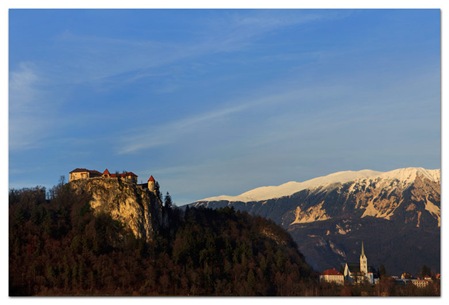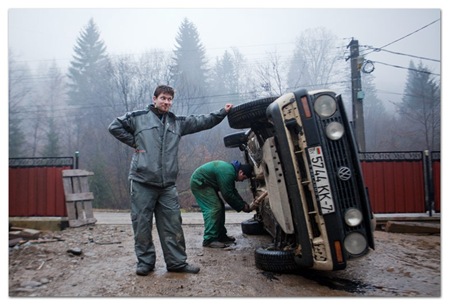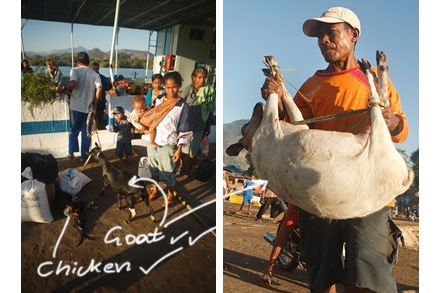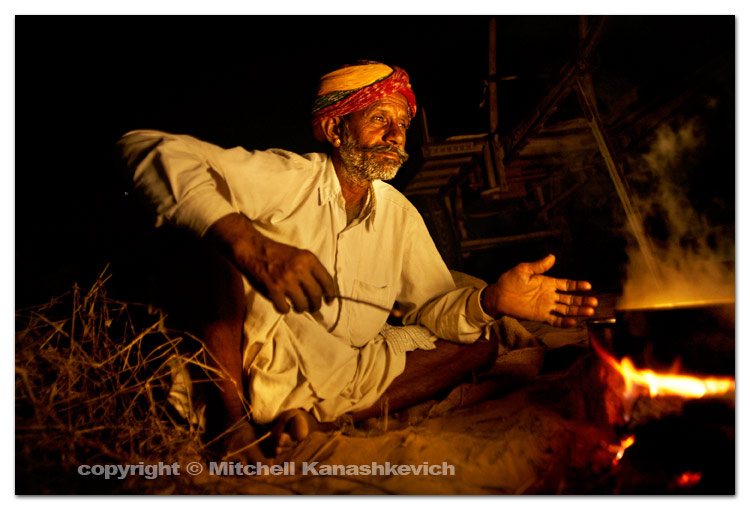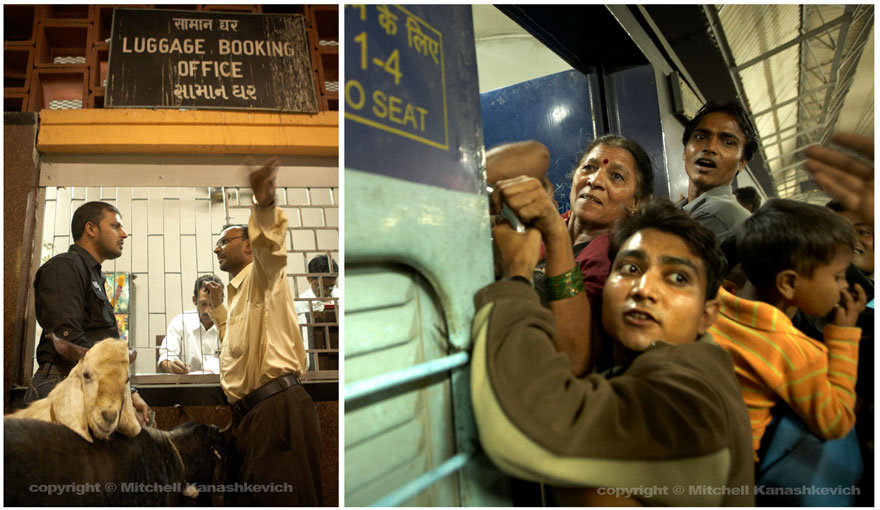Just under two months in India and my Himalayan adventure has come to an end. As usual, time flew by very quickly and as usual I wish I could stay longer. I am tired though. This trip was intense in so many ways. Riding in the mountains does take a toll on the body and the motorbikes. Both “machines” have cracked chassis from the horrendous (but spectacular) Zanskar road.
Off to the Himalayas
While in the Philippines, I somewhat spontaneously decided to go to the Indian Himalayas for my 30th birthday. I’ve jokingly called it an early mid-life crisis. Part of the reason for this trip is to prove to myself that I can ride to Ladakh on a motorcycle, another part is that I just want to live in the moment to the fullest and, of course I have some photographic ideas too.
Postcard from Slovenia and the trials and tribulations of life on the road.
I’ve been on the road in Eastern Europe for about a month and a half now and I’m kinda tired. Perhaps it’s the road, perhaps it’s the fact that there has been relatively little photography or maybe it’s the bad weather, which has contributed to the lack of photography.
Perhaps it’s the stupid decisions I’ve made before leaving – like taking a 25 year old car on a 5000 + km journey. In Asia transport trouble often led me to make new friends and gave me a glimpse into their worlds. Believe it or not, leaving yourself vulnerable in a difficult situation can really show you what a certain culture/people is like and that can make any transport trouble pretty bearable. In the places I’ve traveled in Asia there’s always a positive aspect that emerged, sometimes something as profound as the affirmation of the great potential of human kindness. When a stern looking desert man who speaks no word of English sees you’re in trouble, goes 10 km one way and back to bring some tools to fix your motorbike and then, after all that invites you for tea and chapattis with his family, insisting that you come back for lunch, well that makes any human being with emotions almost teary eyed.
My experiences in Eastern Europe (not including Belarus) have been pretty far from anything like that. They’ve mostly been all about paying, and paying lots. The mechanic doesn’t invite you for lunch either, and doesn’t introduce you to his family, which is obviously totally understandable, but it sure puts things into perspective. Why do people in India and Indonesia do that? Are they so much more hospitable and open to human interaction than Europeans? I guess in general, the answer is “yes” and I guess that’s why I love being there so much.
The sole exception of a sort happened in Maramures, Romania. My car’s exhaust pipe fell apart after I hit a pot-hole, there was no equipped garage nearby and the only mechanic was one with a very simple set-up. We couldn’t drive too far with the exhaust dragging on the ground and so we had to act on the spot. The mechanic had enough sympathy to understand that and came up with a solution. It was decided that everyone who was there – me, two guys I traveled with, the mechanic and his friend were gonna push the car on its’ side, so the exhaust pipe could be welded together. The four of us were slightly short of muscle power and a passing-by neighbor was asked to help. Without any hesitation he did.
We managed to sort everything out and I was back on the road, thanks to the resourcefulness of these villagers from Maramures. That was about as close as I’ve come to an Indian experience in Europe.
Why does any of this matter? It doesn’t really, if I don’t think about it, but as mentioned, I feel these situations help me put things into perspective, to appreciate the countless amazing moments that have filled my life while I’ve been traveling. They help me gain some sort of an understanding of this crazy world we live in and that in turn can’t be all that bad for my photography.
I don’t advise anyone to do what I’ve been doing – driving in a 25 year old car, I mean. But when I think about it, I got myself the best thing I could can afford at the time, the other option would be not to go at all. I’ve been my own guinea-pig, seeing how far I can go and what adventures and experiences will come my way. I did all the main things I wanted and I can’t complain about that.
Perhaps I’ve been spoilt by the kindness of the amazing strangers who have come my way in the past. Typing this in an overpriced hotel room and paying for a crappy internet connection somewhere on the Slovenian border in Italy, I’m thinking that perhaps it’s time to get back to “reality”.
Tomorrow I will see if my car is fixable. It was a little unnerving to see smoke come out from under the bonnet, you don’t need to be a mechanic to know that’s not the best sign.
My little adventure is almost over, I originally planned to return to Belarus around the middle of December, I still hope that I can drive back and not have to fly there. :)
The top image is from Bled, Slovenia – an unbelievably beautiful place. I was lucky enough to have a sunny day when I arrived, it was all rain and fog later. The next image is me with my car flipped on the side, while the exhaust pipe was getting welded.
A blast from the past.
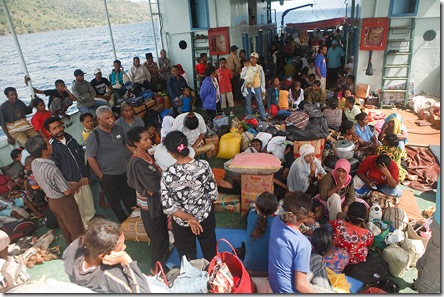 Well, again it’s been much too long since my last post. I’ve been busy – yes. But I did have a few ideas that I wanted to share here. Unfortunately my ideas for posts often take very long to cook up and when they do, they sometimes start morphing into something completely different.
Well, again it’s been much too long since my last post. I’ve been busy – yes. But I did have a few ideas that I wanted to share here. Unfortunately my ideas for posts often take very long to cook up and when they do, they sometimes start morphing into something completely different.
I have many things on my plate at the moment. There are several things I’m working on at once - one of them is another e-book. This one is going to be on lighting for travel photographers and those on the move. It’ll cover the use of off camera flash, reflector and of course natural light. The e-book will be similar format to “Understanding Post Processing” in that I will break down how certain images of mine were created. But there will be more examples, diagrams/illustrations of light set ups and lots of explanations. I’m pretty excited about it, but more on that in the coming days (or weeks).
The post from the beginning of the month “Some words to aspiring travel photographers” seems to have struck a chord with many and as I was sorting through some images from Indonesia, I came across photos from that ferry I mentioned. The one packed with goats, chickens, furniture, dry fish and lovely fellow passengers who chain-smoke and continuously spit on the floor.
And so, rather than bore you with a half-thought-out blog post, I leave you with images taken on the morning of our 16 hour, overnight ferry ride from an island called Lembata to one called Alor. The photo at the top of the page is obviously of the fellow passengers who didn’t impress me much with their smoking and spitting. I guess the image doesn’t do them “justice”.
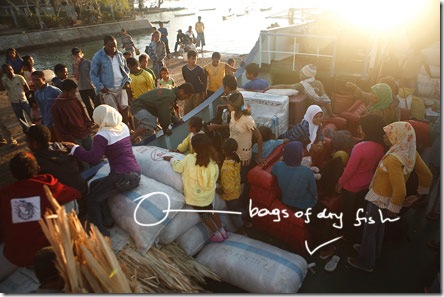
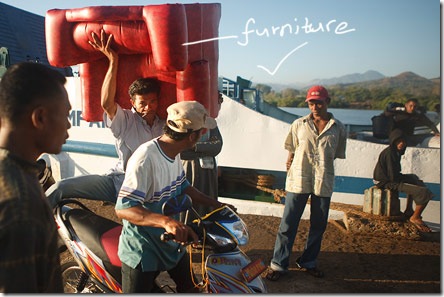
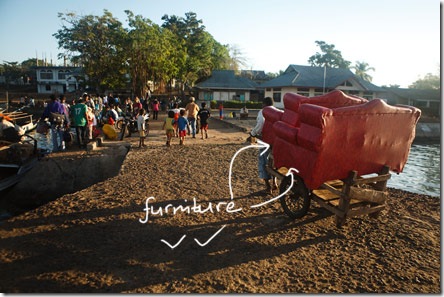
Some words to aspiring travel photographers
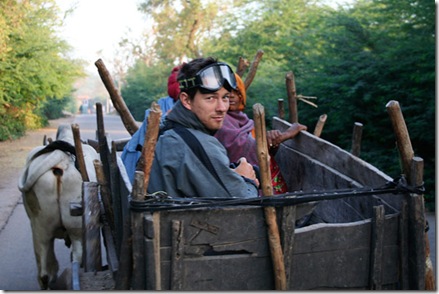 It may be borderline pretentious of me to be offering words to “aspiring” travel photographers, since until pretty recently I was only “aspiring” to do this thing myself. The reason for the post is a question, which I have received numerous times over the past couple of weeks, in various forms:
It may be borderline pretentious of me to be offering words to “aspiring” travel photographers, since until pretty recently I was only “aspiring” to do this thing myself. The reason for the post is a question, which I have received numerous times over the past couple of weeks, in various forms:
How does one become a travel photographer and go on to make enough money in this profession?
At first the question makes me laugh. Who the hell am I to be giving people advice on anything career-related? I’ve never had much of a plan and I always considered that a lot of my success was a result of pure luck. Regardless of whether I’ve changed from an “aspiring travel photographer” to whatever else, I have realized that I am now doing something that many dream of - I travel, take photos and mange to “survive” off the income generated by these photos. On second look I think that there may be reason to my “madness” and perhaps my own story can be useful to other young people starting out. Here it goes. :)
To “become a travel photographer” I worked all sorts of shitty jobs, occasionally committed intellectual and creative suicide by shooting what I consider trash, I used every opportunity in sight to get on the road. There’s an interesting concept I heard somewhere on the net (probably Brooks Jensen’s podcast) - you need to dedicate 10,000 hours to something in order to become proficient at it. Sounds like a fair assumption. That’s basically what I did without realizing. I never quite thought of it as a 10,000 hour thing, but I did know that to be decent at shooting particular themes I needed to shoot them for an extended period of time and so I totally immersed myself in doing just that, while I went off on trips that ranged from six weeks to seven months.
After my third India/Nepal trip (the seven month one) I felt that I really had an idea of what I was doing and incidentally that’s when other things started to click. I began to get published in magazines, had an exhibition and made print sales (more though magazines then from the exhibition). As much as everyone today says that print media is on its last legs, I’ll say that it’s pretty important to get your work published. There’s just a certain type of validity that comes with having your work in print. It means that someone at least thought enough of it to spend their money on the required paper and ink.
With the publications, I saw that my work had some value and I asked myself this question: How can I generate a more regular income from my photos? I looked at image/stock agencies. Got a contract with Lonely Planet Images (on my second attempt), but terminated it before long – this isn’t the place to go into the details, Lonely Planet make great guidebooks… and let’s leave it at that. :)
I still wanted to have my photos represented by an agency, those who are seriously working with the big name agencies know how important they can be and so, I went on a search. A bit of luck, weeks of waiting, empty phone calls and emails, weeks more of being bounced around and I finally managed to get in with Getty Images – everyone’s “favorite” stock selling (not so gentle) giant. :)
This brings me to How do you make enough money? part of the question. Well, it all depends on what you want enough for. A comfy life in inner-city Sydney? There’s a very slim chance that your travel photography will generate enough income for that in the first years. But having your images make you enough to travel and live around the cheaper parts of the world? Very possible, that’s what I do. :)
After a couple of years of very intense photographing and relatively recent, almost equally intense attempts at finding ways to make money from it, I have to say that I’m still very very far from striking it rich. Every month Getty sells some of my work and probably makes me enough to get by in most of Asia. I am still submitting to magazines and looking for alternative incomes from my photos, I’m even still willing to sell my soul, to shoot what I don’t love every now and then. However, importantly I no longer have to do what I don’t like, my images are finally “working” for me. Even more importantly I don’t have to work in retail, restaurants or wherever else just to save enough for the next journey.
But still, in all honesty, the way that me and Tanya (my wife) live is not for everyone. Certain comforts must be forgotten, while you’re on the road with a limited income, you simply can’t afford them.
Of course much of the beautiful, amazing things associated with travel are completely free, but if you ever compare your experiences with those of a friend, who may have traveled the same route as you during his four-week annual holiday, you realize that the pleasure you get out of traveling is very different to his. Your pleasure has a perverted twist. While he enjoys sipping cocktails on a luxury boat-cruise, you jump on a ferry packed with goats, chickens, furniture and dry fish, with lovely fellow passengers who chain-smoke and continuously spit on the floor. The journey exhausts and frustrates, and by the end you reek of that damn dry fish and your own sweat. But you’ve made new friends, learned words in a foreign language and have one heck of a story to tell when you get home. The pleasure comes from the experience and from the fact that you survived it. Your friend didn’t “suffer” on the luxury boat, but nor did he experience the ‘realness’ of actually being in another country, among regular people from a different culture.
If your cup of tea is the ferry ride and you’re really into your photography, then perhaps things don’t need to be very complicated.
I’ll borrow words from Chase Jarvis. He’s not a travel photographer, but unlike me, he really knows what he’s talking about. :)
There are two things you need to succeed: to be undeniably awesome at what you do, and to persevere.
Applies to everything, even travel photography.
(The confused character with ski-goggles above is none other than me. :) I used to wear the ski-goggles when riding the motorcycle. In this image I’m riding in the back of a bullock cart during an early morning in Rajasthan’s, Bundi District. Didn’t get a good picture, but the ride was kinda interesting.
Bangalore, Pune, Mumbai and Good Bye India.
 Bangalore - we didn’t originally plan to stop in this city, but it was the nearest place from where we could get a train to Pune, our final stop before we’d fly from Mumbai. I didn’t want to ride any more either, but all trains to Bangalore were full and you can’t put a motorcycle on a bus.
Bangalore - we didn’t originally plan to stop in this city, but it was the nearest place from where we could get a train to Pune, our final stop before we’d fly from Mumbai. I didn’t want to ride any more either, but all trains to Bangalore were full and you can’t put a motorcycle on a bus.
I planned to ride the 480km from Madurai to Bangalore over two days, but somehow Tanya and I summoned up enough energy and finishing the ride in one day seemed possible.
480km is the longest distance that I have ever ridden in one day on a motorcycle, anywhere. If I were riding in Australia, this distance would not seem that far, really. But this is India and here distance is not only measured by milestones along the road. It is measured by how many cows, chickens, goats, children and women with firewood on their heads you almost hit (because they almost jumped under your wheels) as well as how many buses and trucks almost hit you (because they are bigger and don’t care). It’s a long distance, almost unbearably long. Your butt feels like it’s burning on the motorcycle seat all the way, but you finally pass the pain barrier after 400km, you stop feeling or caring.
Bangalore – the “I.T. City”, “The future of India”. You could have fooled me by the last 20km of road that leads there. Countless potholes, puddles of black water, construction, everywhere and that horrible, dark smoke, the whole thing felt like traveling through a post-apocalyptical landscape, and then you reach the city itself. I’m sure that Bangalore is as amazing as people make it out to be, but whatever it has to offer, it can offer to someone else. I had no time to discover its charm under the black cloud of traffic smoke; I was to finish my “business” and to head off.
At the railway station we sent what was left of the motorcycle back to my Gujarati friend Hardik, who is now in Ahmedabad (Gujarat’s commercial capital). Then it was our turn to go. We’ve become soft when it comes to public transport. We avoid buses because of the loud music and no leg-room; we avoid the sleeper class on the train because of the countless beggars and hawkers that pass through every other minute and we even avoid the “Three-tier AC”, because it still feels somewhat crowded. So we got two “Two-Tier AC” tickets for our 24-hour train ride to Pune. “Two Tier AC” means that you have a compartment with four beds in it and two beds along the corridor, what it does not mean is that you will get the peace and quite that you long for on a tiring journey. I had to force myself to sleep to the sound of continuous burping, farting and snoring of fellow passengers. At 11:30 pm a young boy with a loud, squeaky voice decided it was a good time to have a conversation with his father about Superman. Oh, the joys of travel on the Indian Railways!
Pune – just a one night stop here, a quick catch up with a friend - Rahul, a young man who had recently spent a year in Germany, a year which radically changed the way he now looked at his own city, his country for that matter. The first time I met him I told him that I thought Pune was very modern and developed. “Modern, developed?! No, this place is not like that! You see a high-rise glass building and then you walk inside and you see the people there, spitting on the shiny floors, throwing their shit around. That is modern? Developed?” With his unusually cynical views and his stories about Pune’s Koregaon Park and the infamous “Osho International Meditation Center” Rahul certainly kept me amused and entertained. I hope I meet him again one day.
Mumbai – the city of dreams for millions. I never liked this place very much, but make no mistake about it, it is absolutely, incredibly fascinating.
One more friend to catch up with in Mumbai – Santosh, an independent filmmaker who works as a sound engineer in various Bollywood drama-series out of necessity. Santosh is one of the most intelligent fellows I have come across on my Indian journeys. Whenever I meet him he tells me countless stories about various places we come past in Mumbai. These stories have probably played a part in forming my view of the city – yes there is crime and there are slums, but there is so much more that you will simply pass by if you are visiting by yourself. So many cultures and sub-cultures and everyone has a story, a fascinating story.
As we walked to a restaurant in Colaba, a place where I usually eat, we passed through the parts of the city where the horrors took place in December. It’s eerie when you hear what happened and picture things, but now, just a couple of months later life goes on as before. Sure there are a few policemen with machine guns, but you couldn’t even imagine what took place in the very same streets, where today people are laughing, drinking and celebrating life. That’s how India is. It doesn’t stop for anyone, nor does it compromise or change because you want it to. It is every bit “The Incredible India” of the romanticized advertisements and it is every bit as dark and hopeless as its worst slums, its deranged beggars and its corrupt politicians.
This trip has exhausted us more than any of our previous visits to the country. I don’t know why exactly. Perhaps it’s the distance we’ve covered by motorcycle or perhaps it is because we understand things a little more now. The naivety is gone and it is not only the exotic, beautiful India that we see these days. We realize just how hard it can be to survive in this country, to live with dignity or to at least make it possible for your children to live with dignity. We haven’t learned something that we didn’t know before, but it has really hit home this time. Our realization however, doesn’t make this country any less fascinating. It is a matter of time until we come back. Although I want to spend a few years seeing other parts of the world, I know that just like this time, when India calls – you simply pack up and go.
Photo: The image at the top was taken on a previous India trip. I shot it in a neighborhood about 500 meters from the famous Taj Hotel in Mumbai. It wasn’t quite what you’d classify as the slums in India, but not much better. Insane contrast, the richest of the rich were staying at the Taj, while the poorest of the poor were living in less than ideal conditions and all that separated them from each other was a five minute walk. It’s the old cliché about India – the land of extreme contrasts, but it is so true and it is still tough to get your head around the whole concept when it comes to the rich and the poor.
The Spirit of Travel, Cool in the Hills and Tibetan Monks
 If I do not see another Theyyam performance for the rest of my life I will not be devastated. Don't get me wrong, watching these was amazing, surreal, but maybe this is the case of too much of a good thing being not that great. "Theyyam Overload", perhaps. The highlight of our little endeavor into the world of Theyyam must have been the second time we met up with Vipin - the Theyyam artist I mentioned in the previous post. That day, in many ways embodied what travel is all about. It started horribly, we were 'evicted' from possibly the most amazing hotel I've stayed at. Our room's balcony had a view of the Arabian sea. Every morning we watched dolphins splash around within 50 meters from the shore.Long and strange story about the eviction - in short, the hotel was meant for government employees only, but somehow we managed to stay for five days, then some genius finally decided it was enough. The main point is - once you've tasted the good life, it really, really sucks getting back to mediocrity. Getting told to 'vacate' our perfect room and to exchange sea views for views of a sea of traffic on one of the towns busiest and noisiest roads set up what could have been the most disappointing day of our journey, yes the place was that good (and cost about as much as a McDonald's value meal). But that wasn't the end of our bad luck. First we couldn't find any half decent hotel to move to and then my meeting with a professor at the Folklore Academy, the man who had promised to hook me up with some Theyyam artists was cancelled due to an unexpected meeting that could not be put off. I wanted to see him to get reliable information on where I could see more Theyyams. Having been given the wrong information the day before we traveled a couple of hours along a dreadful, traffic filled road for nothing. Now I had to face the fact; I had come to the region to photograph something that I couldn't even find, I really wasn't getting anywhere.
If I do not see another Theyyam performance for the rest of my life I will not be devastated. Don't get me wrong, watching these was amazing, surreal, but maybe this is the case of too much of a good thing being not that great. "Theyyam Overload", perhaps. The highlight of our little endeavor into the world of Theyyam must have been the second time we met up with Vipin - the Theyyam artist I mentioned in the previous post. That day, in many ways embodied what travel is all about. It started horribly, we were 'evicted' from possibly the most amazing hotel I've stayed at. Our room's balcony had a view of the Arabian sea. Every morning we watched dolphins splash around within 50 meters from the shore.Long and strange story about the eviction - in short, the hotel was meant for government employees only, but somehow we managed to stay for five days, then some genius finally decided it was enough. The main point is - once you've tasted the good life, it really, really sucks getting back to mediocrity. Getting told to 'vacate' our perfect room and to exchange sea views for views of a sea of traffic on one of the towns busiest and noisiest roads set up what could have been the most disappointing day of our journey, yes the place was that good (and cost about as much as a McDonald's value meal). But that wasn't the end of our bad luck. First we couldn't find any half decent hotel to move to and then my meeting with a professor at the Folklore Academy, the man who had promised to hook me up with some Theyyam artists was cancelled due to an unexpected meeting that could not be put off. I wanted to see him to get reliable information on where I could see more Theyyams. Having been given the wrong information the day before we traveled a couple of hours along a dreadful, traffic filled road for nothing. Now I had to face the fact; I had come to the region to photograph something that I couldn't even find, I really wasn't getting anywhere.
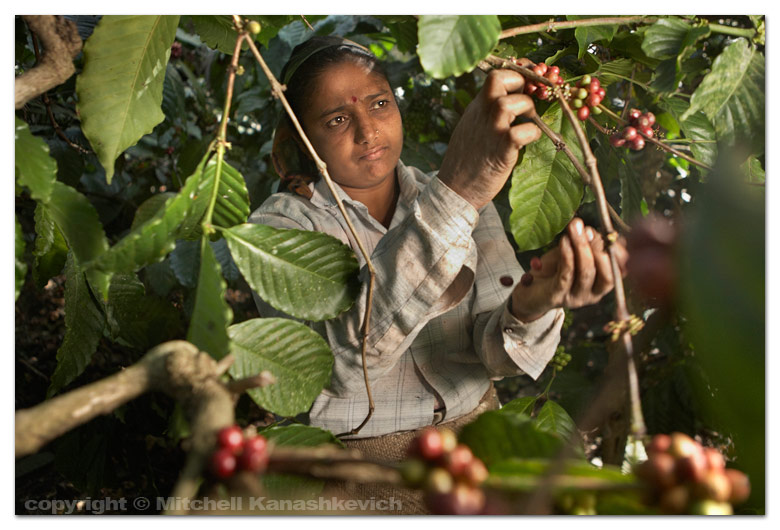 Ready to cry like a child who's been told he's not getting a bicycle after all, I decided instead to go to Vipin's village and give him the Theyyam photos I shot on the night I met him. Vipin was happy to see me and to receive the photos, I couldn't quite match his enthusiasm. But that all changed when he told us that there was a Theyyam performance in his very village. In fact there were two performances that night. These weren't Theyyams aimed at mass audiences, media and tourists, instead I witnessed what was probably as close to Theyyam as it had been hundreds of years ago - raw, sometimes brutal and always full of energy. By late night we had seen a Theyyam performer, possessed by the divine spirit behead four roosters...with his bear teeth, another performer walk through fire and yet another, dance around frantically to some of the most incredible drumming I've heard. We called it a night close to 11pm - real late for rural Kerala. Vipin had been called home a couple of hours before and we were left in the dark, in the middle of nowhere, dependent on our memory to get back. After almost getting lost in the narrow, dark village roads we somehow made it to the main highway that led to Kannur. As we rode the motorcycle back to town, we reflected on the day that pretty much summed up the realities of this life on the road. We were reminded once again that even in the face of the biggest disappointments something amazing could be just around the corner. Knowing that Tanya - my wife was sitting behind me on the bike, ready to face all the obstacles with me also made me realise just how lucky I am.
Ready to cry like a child who's been told he's not getting a bicycle after all, I decided instead to go to Vipin's village and give him the Theyyam photos I shot on the night I met him. Vipin was happy to see me and to receive the photos, I couldn't quite match his enthusiasm. But that all changed when he told us that there was a Theyyam performance in his very village. In fact there were two performances that night. These weren't Theyyams aimed at mass audiences, media and tourists, instead I witnessed what was probably as close to Theyyam as it had been hundreds of years ago - raw, sometimes brutal and always full of energy. By late night we had seen a Theyyam performer, possessed by the divine spirit behead four roosters...with his bear teeth, another performer walk through fire and yet another, dance around frantically to some of the most incredible drumming I've heard. We called it a night close to 11pm - real late for rural Kerala. Vipin had been called home a couple of hours before and we were left in the dark, in the middle of nowhere, dependent on our memory to get back. After almost getting lost in the narrow, dark village roads we somehow made it to the main highway that led to Kannur. As we rode the motorcycle back to town, we reflected on the day that pretty much summed up the realities of this life on the road. We were reminded once again that even in the face of the biggest disappointments something amazing could be just around the corner. Knowing that Tanya - my wife was sitting behind me on the bike, ready to face all the obstacles with me also made me realise just how lucky I am.
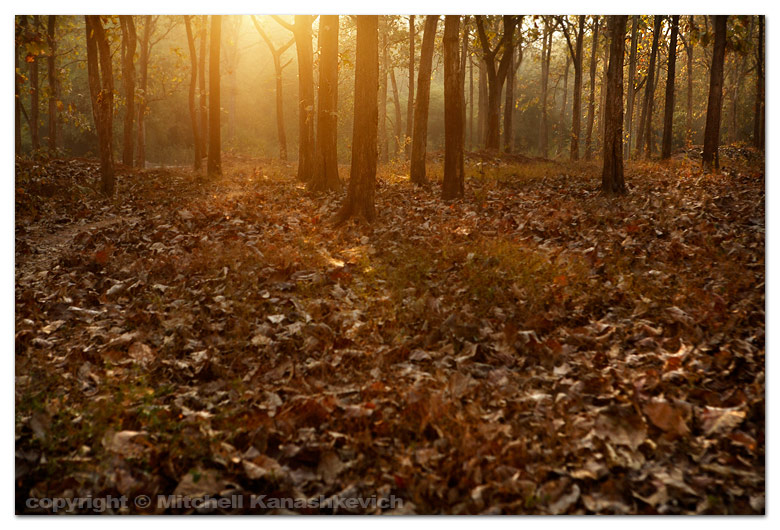 The Theyyam stuff, the heat of coastal Kerala and continuous, hectic rides to the surrounding villages again left us feeling a little drained. We had been contemplating going to Coorg - a hilly region with a cool climate, to refresh for a couple of days, then we'd head back down the coast to Thrissur - one of Kerala's cultural centers. On the map Coorg isn't far from Kannur - 113km. But as always, in India - expect the unexpected. A relatively small patch of the road, known locally as the forest road, was how shall I say - damaged. The damage was so bad that the road looked like it had been bombed continuously for 16 km. I figured that I had traveled on similar roads before, so I didn't make that much of it. BIG mistake! Almost 10km through we started hearing all sorts of noises from our beloved motorcycle. We stopped, I lifted the bike seat and there it was, my worst fear had come true - the motorcycle frame/chasis was broken, snapped right in the middle. To avoid messing things up even more we couldn't continue traveling with all that load and Tanya on the back, and so my poor wife had to walk 6km up a winding, hilly forest road, while I slowly and carefully navigated my way around giant pot holes towards a better road.
The Theyyam stuff, the heat of coastal Kerala and continuous, hectic rides to the surrounding villages again left us feeling a little drained. We had been contemplating going to Coorg - a hilly region with a cool climate, to refresh for a couple of days, then we'd head back down the coast to Thrissur - one of Kerala's cultural centers. On the map Coorg isn't far from Kannur - 113km. But as always, in India - expect the unexpected. A relatively small patch of the road, known locally as the forest road, was how shall I say - damaged. The damage was so bad that the road looked like it had been bombed continuously for 16 km. I figured that I had traveled on similar roads before, so I didn't make that much of it. BIG mistake! Almost 10km through we started hearing all sorts of noises from our beloved motorcycle. We stopped, I lifted the bike seat and there it was, my worst fear had come true - the motorcycle frame/chasis was broken, snapped right in the middle. To avoid messing things up even more we couldn't continue traveling with all that load and Tanya on the back, and so my poor wife had to walk 6km up a winding, hilly forest road, while I slowly and carefully navigated my way around giant pot holes towards a better road.
 We decided to stop for the night at Madikeri - Coorg's biggest town. Our chances of fixing the chasis in this remote region were slim, but Madikeri was our best bet. Again we were facing a very unpleasant situation, but as has happened countless times in India, a stranger came to the rescue. After failed attempts to explain what I need and a few rejections from mechanics and welders who understood, we unexpectedly came across Joe - a catholic Indian man from the coastal city of Cochin. Joe was looking to buy a motor to use for a crop-sorting machine on his spice estate. He came to the same place where we were trying to find out whether our problem can be fixed. After hearing our predicament Joe took it upon himself to help out the guests in his country. The next day his two equally helpful nephews Jeremy and Ronald were involved and although the task became a job of epic proportions (Madikeri is a relatively small town) it was done by the end of the afternoon. It was a little late to head to our next destination and we decided we'd stay another night in Madikeri, that was until Ronald, Joe's nephew called. Ronald found out that I was interested in checking out some tea or coffee plantations/estates and so he invited us over to his estate for the night. We couldn't resist. Another potentially horrible situation had turned in our favor. The next morning we woke up in a mini forest of coffee and pepper bush, as well as some very tall (and apparently expensive) trees. The golden light played it's role in making everything magic. Tanya and I wondered around, appreciated the surroundings and shot a few frames. We expressed our gratitude to our new friends, who saved us and turned a potential disaster into one of the most memorable moments of our journey. Then it was time to move on. Next stop - Bylakuppe - a Tibetan refugee settlement. That's where we are as I type.
We decided to stop for the night at Madikeri - Coorg's biggest town. Our chances of fixing the chasis in this remote region were slim, but Madikeri was our best bet. Again we were facing a very unpleasant situation, but as has happened countless times in India, a stranger came to the rescue. After failed attempts to explain what I need and a few rejections from mechanics and welders who understood, we unexpectedly came across Joe - a catholic Indian man from the coastal city of Cochin. Joe was looking to buy a motor to use for a crop-sorting machine on his spice estate. He came to the same place where we were trying to find out whether our problem can be fixed. After hearing our predicament Joe took it upon himself to help out the guests in his country. The next day his two equally helpful nephews Jeremy and Ronald were involved and although the task became a job of epic proportions (Madikeri is a relatively small town) it was done by the end of the afternoon. It was a little late to head to our next destination and we decided we'd stay another night in Madikeri, that was until Ronald, Joe's nephew called. Ronald found out that I was interested in checking out some tea or coffee plantations/estates and so he invited us over to his estate for the night. We couldn't resist. Another potentially horrible situation had turned in our favor. The next morning we woke up in a mini forest of coffee and pepper bush, as well as some very tall (and apparently expensive) trees. The golden light played it's role in making everything magic. Tanya and I wondered around, appreciated the surroundings and shot a few frames. We expressed our gratitude to our new friends, who saved us and turned a potential disaster into one of the most memorable moments of our journey. Then it was time to move on. Next stop - Bylakuppe - a Tibetan refugee settlement. That's where we are as I type.
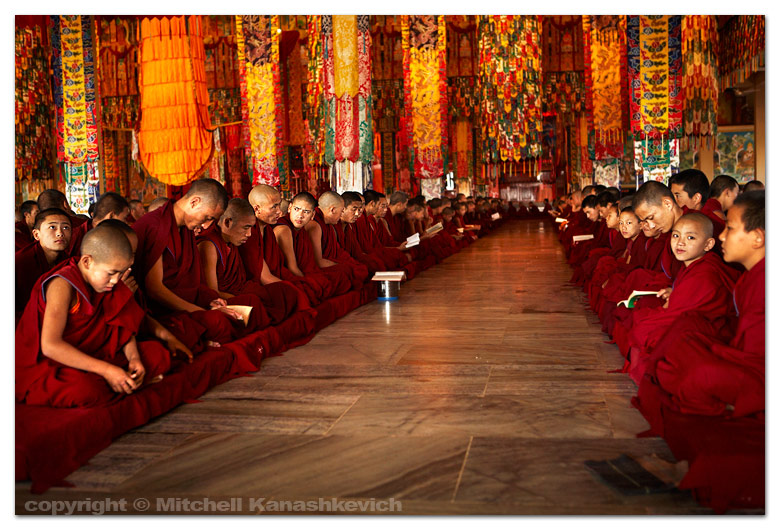 Bylakuppe is a peaceful place, full of maroon robed monks and monasteries. It ain't Himalaya, but there's still something special about it. Monasteries and monks are always photogenic, so we've already spent a few days photographing here. Tomorrow we head off on a little detour, to avoid the dreadful 'Forest Road'. We'll probably end up in Mysore for a few days, then it's on to Wayanad. This cool climate and nature stuff has inspired me to spend some more time up in the hills, in India's forested areas.
Now to the photos. From top to bottom: Monks rushing out after the Morning Prayer, Sera Jey Temple, Bylakuppe. Coffee berry picker at Ronald's estate, Coorg. Morning along the road in Coorg, Kushalnagar region. A mahout washing his elephant at the Dubare Forest Reserve (Forgot to mention we went there. Shot this while standing knee high in water filled with elephant urine and crap ) Bottom: Inside of Sera Jey Temple, Bylakuppe.
Bylakuppe is a peaceful place, full of maroon robed monks and monasteries. It ain't Himalaya, but there's still something special about it. Monasteries and monks are always photogenic, so we've already spent a few days photographing here. Tomorrow we head off on a little detour, to avoid the dreadful 'Forest Road'. We'll probably end up in Mysore for a few days, then it's on to Wayanad. This cool climate and nature stuff has inspired me to spend some more time up in the hills, in India's forested areas.
Now to the photos. From top to bottom: Monks rushing out after the Morning Prayer, Sera Jey Temple, Bylakuppe. Coffee berry picker at Ronald's estate, Coorg. Morning along the road in Coorg, Kushalnagar region. A mahout washing his elephant at the Dubare Forest Reserve (Forgot to mention we went there. Shot this while standing knee high in water filled with elephant urine and crap ) Bottom: Inside of Sera Jey Temple, Bylakuppe.
Pimpin my ride, Indian Railways and Kolayat Fair
I’ve been waiting for something eventful to happen before posting, but events often happen in bunches and really quickly. Having to travel for almost 1000 km over the last five days, time is the luxury which I do not have. I’ll have to be relatively brief.
At this stage, almost three weeks into my journey I feel that I have already experienced the full range of the emotions that India evokes. Yes, the people here are absolutely amazing, but it is also incredible that I can still get so frustrated. A few times I have already had to break the rule of not riding the motorcycle after dark. I’ve done it out of necessity not by choice and I will say it again – DO NOT RIDE AFTER DARK IN INDIA, particularly not in Rajasthan. The truck and bus drivers are maniacs and they can kill you, given enough attempts. How? By blinding you with the high beam and taking up your lane as they overtake something slow-moving in the opposite direction to you – e.g. camel cart. I’ve reached the boiling point a few times already.
My motorcycle luggage carrier drama is now hopefully over. I “pimped my ride” in an area of Ahmedabad, Gujarat where young lads with too much money modify their Indian-made-bikes to look like foreign models. I wanted no such thing. My desire was to simply strengthen my motorcycle frame to withstand the rigors of bearing the weight of my luggage on rural Indian roads. A frustrating, but overall productive experience. I got what I wanted, albeit almost a day later than promised, with just enough time to book my vehicle as luggage on the Indian Railways. The experience of sending your motorcycle somewhere on the train surely takes at least a few days off your life. Finding where to go, who to talk to, how much to really pay and doing it all before the train departs – it’s really not that fun. The bike and we went from Ahmedabad to Jodhpur, on the train, from there we rode to Bikaner, then to Bundi with a one-night stop in Pushkar. Bundi is the final destination for now. From here I will lead a private photography workshop for 17 days.
I have not spent enough time anywhere yet to really absorb the places I’ve been to. One pleasant surprise on the way was the Kolayat fair – dubbed “Mini Pushkar” (the famous camel fair). Here we met two old cameleers with whom we will likely go out into the desert, just for a short journey for the workshop, around some unspoilt traditional villages. Going with them seems like a much better alternative to hiring a jeep and a driver from a Tour Company which I spoke to. I hate being the tourist who is taken around like a spectator in a zoo and then gets milked for every last penny. The tour operator promised me villages which are not ‘touristy’. A ‘touristy’ village in the desert Rajasthan usually means being followed by villagers who ask for rupees, chocolates, pens, soap, shampoo and whatever other things previous tourists were ‘kind’ enough to leave. ‘Not touristy’ means that previous visitors and operators have basically not screwed the place up. I asked whether the company’s driver knew of such villages – Yes, he has taken many tourists there! Replied the company owner. “Hmm, yeah, what you say really makes sense. A good reason to pass.” I thought to myself.
On the other hand the old cameleers instantly made me feel comfortable around them. Perhaps it was the smell of camel dung, unwashed clothes, bidi smoke and their calm voices - characteristics typical of cattle and camel herders around the region. I had become very familiar with such people in my last India trip and have nothing but positive associations with them – real, unpretentious folk who often seem to belong to a world that is different than that of their neighbors.
I’m off to organize the final details of the workshop. I will be quite intensely involved with it over the next 17 days or so and don’t know how often I’ll be able to post. I’ll try my best. Posting some photos here, just some diary shots from the past week. (The image at the top is a camel herder preparing dinner after dark at the Kolayat fair. I wanted to see how people would react to me using an off camera flash in a soft box, whether it would draw too much attention, thankfully not.)
Riding a motorcycle in India
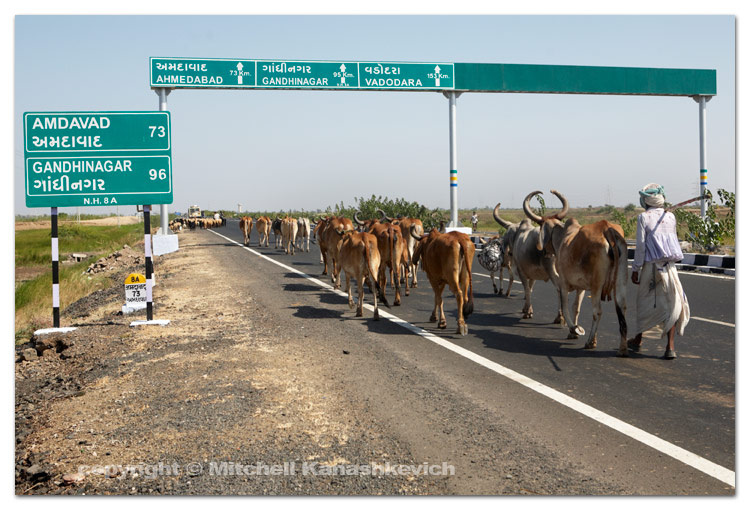 The ride to Ahmedabad was a reminder why I love this life on the road. Just me and my wife Tanya, riding through what are often beautiful, unfamiliar lands, experiencing everything together – this has been a large part of our lives over the last three years. In many ways it is as romantic as some may think, but there is another side, one which is not so nice.The beauty you see is sometimes matched by the horror (to me at least) - the amount of killed dogs on the roads is impossible to count, the scenery is not always ideal - ugly buildings and industrial, smoke belching areas really do not make for inspirational riding. And then there are the road users, who, well let’s just say they do not always act as one might expect, nor do the pedestrians – I’ve had much more close calls than I would have liked to, over the years. To top everything off there is the ‘pain in the butt factor’ (literally) – over a long journey a motorcycle seat becomes the least comfortable place in the world and even a roach-infested hotel starts to seem like a welcoming alternative.
Riding around India is not easy, but it is far from impossible and not as insane as many visitors to India may think. All that one needs is the knowledge of how the Indian roads work, once things begin to make sense everything starts to feel much less daunting.
The ride to Ahmedabad was a reminder why I love this life on the road. Just me and my wife Tanya, riding through what are often beautiful, unfamiliar lands, experiencing everything together – this has been a large part of our lives over the last three years. In many ways it is as romantic as some may think, but there is another side, one which is not so nice.The beauty you see is sometimes matched by the horror (to me at least) - the amount of killed dogs on the roads is impossible to count, the scenery is not always ideal - ugly buildings and industrial, smoke belching areas really do not make for inspirational riding. And then there are the road users, who, well let’s just say they do not always act as one might expect, nor do the pedestrians – I’ve had much more close calls than I would have liked to, over the years. To top everything off there is the ‘pain in the butt factor’ (literally) – over a long journey a motorcycle seat becomes the least comfortable place in the world and even a roach-infested hotel starts to seem like a welcoming alternative.
Riding around India is not easy, but it is far from impossible and not as insane as many visitors to India may think. All that one needs is the knowledge of how the Indian roads work, once things begin to make sense everything starts to feel much less daunting.
Here are some simple tips for those who want to ride a motorcycle around India or simply want to know what it’s like.
Buy a motorcycle that will not keep breaking down Buying a 20-year-old Enfield that has been ridden by every foreigner in Goa that ever wanted to ride a bike is not a good idea. I have used a Bajaj Pulsar and a Hero Honda CBZ. I prefer the first and this is the bike that I still have. Both are 150cc bikes, but they will get you through almost any tough roads. The Pulsar gives a better mileage per liter and from personal experience I can say that I have pushed it to the max and beyond and it survived. These bikes can be bought second hand; I wouldn’t go for anything that is more than 5 years old. To give an idea of a price - my 2003 Pulsar cost 33,000 Rupees in 2007. It was in great condition and didn’t have any breakdowns throughout the journey. Those who have more cash to fork out or prefer a bigger bike – go for one of the newer Enfields, from every single account I have heard that the old ones break down very often, but a wise young Indian man told me that his new Enfield hasn’t had so much as a flat tire, that sounds good to me.
Size Matters On Indian roads whoever is bigger has the right of way. Do not try to play chicken with a truck; you may not like the results. The only exception to the rule is the cow; it roams the streets freely, at a leisurely pace, while everyone stops and gives way.
Volume Matters – The horn is your friend Everyone on Indian roads uses the horn with no remorse. The louder your horn the more chances you have of being heard by the half-asleep truck driver who is listening to very loud music and blocking your lane to overtake him. The horn should be used in many situations. When you see a grandmother crossing the road with a pile of wood on her head without looking to either side – use the horn. When you approach a herd of cows or goats – use the horn; they will often part for you. When you want to overtake a vehicle – use the horn. When you go through a forested area, which potentially houses animals you should scare the crap out of them, so they do not come near the road – use the horn Basically any time you are in doubt – use the horn.
Expect the unexpected Just because a one-way, two-lane road means one-way in your country doesn’t mean it is the same in India. You will see vehicles in the wrong lane all the time, but I was surprised the first time I saw a truck doing 80 km/h in the opposite direction of a one-way national highway. Indian road users seem to be very practical and rules are only obeyed if they serve a practical purpose. Petrol is relatively expensive in India and going 5km till the next U-Turn to get into the correct lane is seen as not practical. Other unexpected occurrences include animals and children running onto the middle of the road and then there are the tree thorns. Apparently the Indian government made the initiative to plant a certain type of tree along the roads, so as to make India greener and less polluted. It just so happens that the tree grows huge thorns and in the dry season, when some of the branches fall off, they inevitably end up on the roads. The thorns will puncture your tires; ask me, I spent a month recovering from an accident after puncturing the front tire of my bike and loosing control.
Flash your headlights When a vehicle is speeding towards you at an insane speed in your lane and you have no place to give way, the signal to communicate your predicament is to flash your headlights. The more you flash them the more urgency you communicate. For the ultimate effect flash the lights and sound the horn.
Learn to read the road This is kinda obvious, as we must learn to look for clues that could signal a potential hazard on the roads at home. However there are additional hazards in India as well as additional signals. For example - a turbaned man carrying a long stick over his shoulder is a shepherd and if you are seeing him, there is a good chance that his herd of cattle is soon to follow.
I’ve got your back The reason why you may often see vehicles turning or doing maneuvers in the middle of the road without ever checking the mirrors or looking behind is because the vehicle coming from behind is expected to be aware that the one at the front can do anything at any time. This rule mostly applies to city/town roads with heavy traffic, however doing it like the locals is not really recommended, just be aware of things are.
Riding after dark is not a good idea First there are the huge bugs that smash against the helmet screen, or take out your eyes if you don’t have protection. There are also the wonderful drivers/riders who only use high beam on roads outside well-lit areas. If you are heading in the opposite direction of a vehicle that is using the high beam you pretty much cannot see anything except for the light, considering that a cow could a few meters in front, this is not a very good situation to be in. Then there are those vehicles which are huge, but look like small vehicles because they only have one light working. A big truck can easily look like a motorcycle when one of its headlights is broken, but mistaking it for a motorcycle can lead to a very unhappy ending.
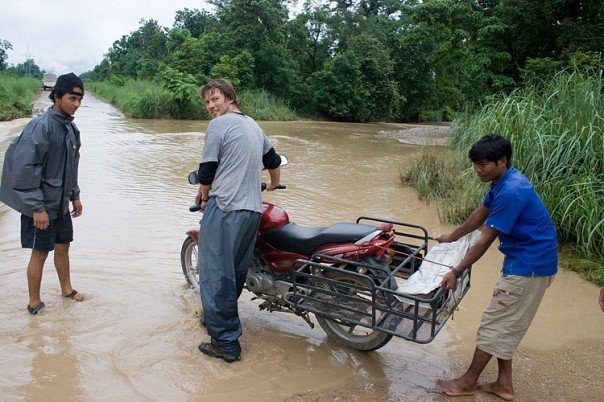
Well, that’s about it. I’ve probably missed a lot, but then a whole book can probably be written on the topic of motorcycle riding around India.

